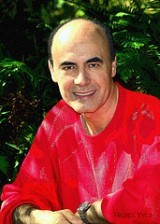
There are less than two dozen chiropractors in the Philippines as of 2013 – representing a very small group of the 100,000 Chiropractors in the world, which mostly practice in countries with advanced economies (the G8 countries). You could say Chiropractic is in its pioneer stages of development in the Philippines.
Chiropractic has been in existence since 1895. It is a health care discipline which emphasizes the inherent recuperative power of the body to heal itself without the use of drugs or surgery. The practice of chiropractic focuses on the relationship between structure (primarily the spine) and function (as coordinated by the nervous system) and how that relationship affects the preservation and restoration of health. In addition, Doctors of Chiropractic recognize the value and responsibility of working in cooperation with other health care practitioners when in the best interest of the patient.
Although there have been isolated members of the profession through out the 1900’s who lived and saw patients in the Philippines, the first Doctor of Chiropractic (DC) to set up a permanent chiropractic clinic in Manila was Dr. Uy in 1986. For the first decade there were around a dozen Chiropractors who came to practice in the Philippines of which only half remained. The next decade saw the doubling of the total clinics from 5 to 10. When I opened my chiropractic clinic in 2006 in SM Bacoor, Cavite and in Forbes, Makati in 2007 I was only the 10th Chiropractor in the country.
 Since 1988 the World Federation of Chiropractors (WFC) has held a seat for the small presence of chiropractors in the Philippines. In 2006 the Asian Pacific Federation of Chiropractic Doctors (APCDF) was established to develop the profession in the region, including the Philippines. We have held a council seat since its inception and I am a current officer.
Since 1988 the World Federation of Chiropractors (WFC) has held a seat for the small presence of chiropractors in the Philippines. In 2006 the Asian Pacific Federation of Chiropractic Doctors (APCDF) was established to develop the profession in the region, including the Philippines. We have held a council seat since its inception and I am a current officer.
The Philippine government passed a law in 1997 referred to as the TAMA act which resulted in the formation of a Complimentary and Alternative Medicine division of the Department of Health. The department is called the Philippine Institute of Traditional and Alternative Health Care, or PITAHC for short. In 2009 PITAHC established the National Certification Committee on Chiropractic (NCCC) which has to date certified 22 Doctors of Chiropractic, all graduates of colleges in the United States.
In the Philippines, there are outdated laws that limit the practice by professionals to Filipino citizens. These same laws permit licensing by reciprocity and there are hundreds of Filipino citizens who are licensed and who practice in the United States. The Chiropractic profession currently is not regulated by the Professional Regulatory Commission (P.R.C.) so foreigners with appropriate residency status with rights to engage in employment and business, and who are qualified and experienced in Chiropractic, are operating their private practices under general civil laws meeting the same requirements of any commercial entity. In addition they undergo Certification by the NCCC to assure the public of their professional training.
These provisions are important for the immediate growth of Chiropractic in the Philippines because most chiropractors who are willing to relocate to the Philippines are not citizens; limiting their practices would be contrary to the best public interest of the people of the Philippines.
The next step is the formalization of a National Chiropractic Association. This organization assists in the development of the Chiropractic profession and also in the self-regulation of its practitioners. Public health education is not the responsibility of the individual doctor but it is a principal role of the association. Second education topic is the providing of continuing education for its member chiropractors and so the profession can keep growing scientifically. Third education topic is the effort towards establishing a formal College of Chiropractic so bright, intelligent and young Filipino men and women can enter the profession after attending a local eight year university training program.
Other duties and responsibilities of the national association will evolve as the profession grows in the Philippines. The last important topic to mention is the formulation (under international consultations) of an appropriate Chiropractic Law as the final stage of public safety and professional recognition.
In the meantime, Media can play an important role in educating the public of the benefits of chiropractic. There have been many highlighted stories on chiropractic by TV and newspapers over the past 20 years and many more are needed. The future for the Chiropractic profession in the Philippines looks excellent, but it also looks like it will take many years of effort and by full and complete acceptance of all members of the profession for the roles each can contribute to the pioneering of Chiropractic in the Philippines.
Michel Tetrault, DC, is the director of Mabuhay Chiropractic Clinics in the Philippines. There are currently three branches offering its services in the following areas: Makati, Las Pinas, Alabang, Global City, Manila and Bacoor Cavite.
He is also Executive Director of the Chiropractic Diplomatic Corps, an International development NGO and is now currently blogging as a community service. Learn more about health and wellness when you visit http://www.docmikeblog.com






